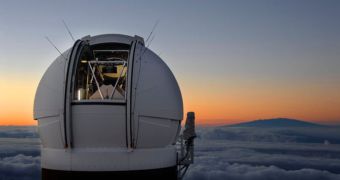A telescope instrument designed to search Earth's surroundings for dangerous asteroids and other near-Earth objects (NEO) discovered a new comet earlier this month. The space object will carry out a flyby around our planet in 2013.
Based on data available at this point, astronomers estimate that it will take two years for the comet to reach our planet. When it does, it will be so bright that people will be able to distinguish it with the unaided eye.
The object is scheduled to come within 30 million miles (50 million kilometers) of the surface of the Sun in February or March 2013. This means that it will reach as far into the inner solar system as the orbit of Mercury, the innermost planet.
Comet C/2011 L4 (PANSTARRS) was determined to have a parabolic orbit, which means that this could very well be the first time it visits the inner portions of the solar system. At the same time, the peculiar orbit might never bring the comet to this location again.
The object was discovered by the Pan-STARRS 1 telescope on the night of June 5th. The observatory is located atop of a mountain in Hawaii, and has a wonderful perspective on the skies. The comet was named after the instrument that discovered it.
According to investigators, C/2011 L4 (PANSTARRS) is at this point located about 700 million miles (1.2 billion kilometers) away from the Sun, heading towards the inner solar system at great speed.
“The comet has an orbit that is close to parabolic, meaning that this may be the first time it will ever come close to the Sun, and that it may never return,” explains University of Hawaii astronomer Richard Wainscoat, who contributed to verifying the existence of the comet.
After the initial finding, a number of telescopes around the world were pointed toward the comet's indicated location. All of them verified the original readings the PANSTARRS team collected during its survey, Space reports.
Experts believe that the comet most likely originated in the Oort Cloud, beyond the Kuiper Belt that lies around the orbit of Pluto. Both the Cloud and the Belt have massive amounts of asteroids and comets, and they occasionally cast some of these objects into the inner solar system.
Over the coming months, astronomers will use several telescopes to refine the comet's trajectory, and ensure that it will not pose any threat to Earth.

 14 DAY TRIAL //
14 DAY TRIAL //